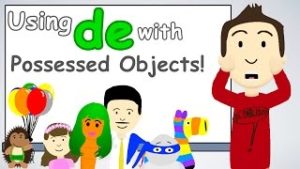
Song – Prepositions of Location
Hey everyone! Here’s a new song video for you all with the prepositions of location! Listen to this song on the

Hey everyone! Here’s a new song video for you all with the prepositions of location! Listen to this song on the

I’ve been wanting to make a video for a long time on how we use “de” for possessions since in English

Elena reached out to me sometime this past spring (2016) and wanted to interview me for her Spanish learning channel. It
Here’s an interactive story that I made on Youtube with the help of those who left comments. Every episode is in order.
¡Hola! In this lesson, we talk about some of the key differences between how we use por and para in Spanish.
¡Hola alumnos cibernéticos! So it turns out that there are many aspects about the Spanish language that can be confusing to
Hola. In this video lesson we’ll be going over the preposición (preposition): con. Con means ‘with’ and is fairly simple to
